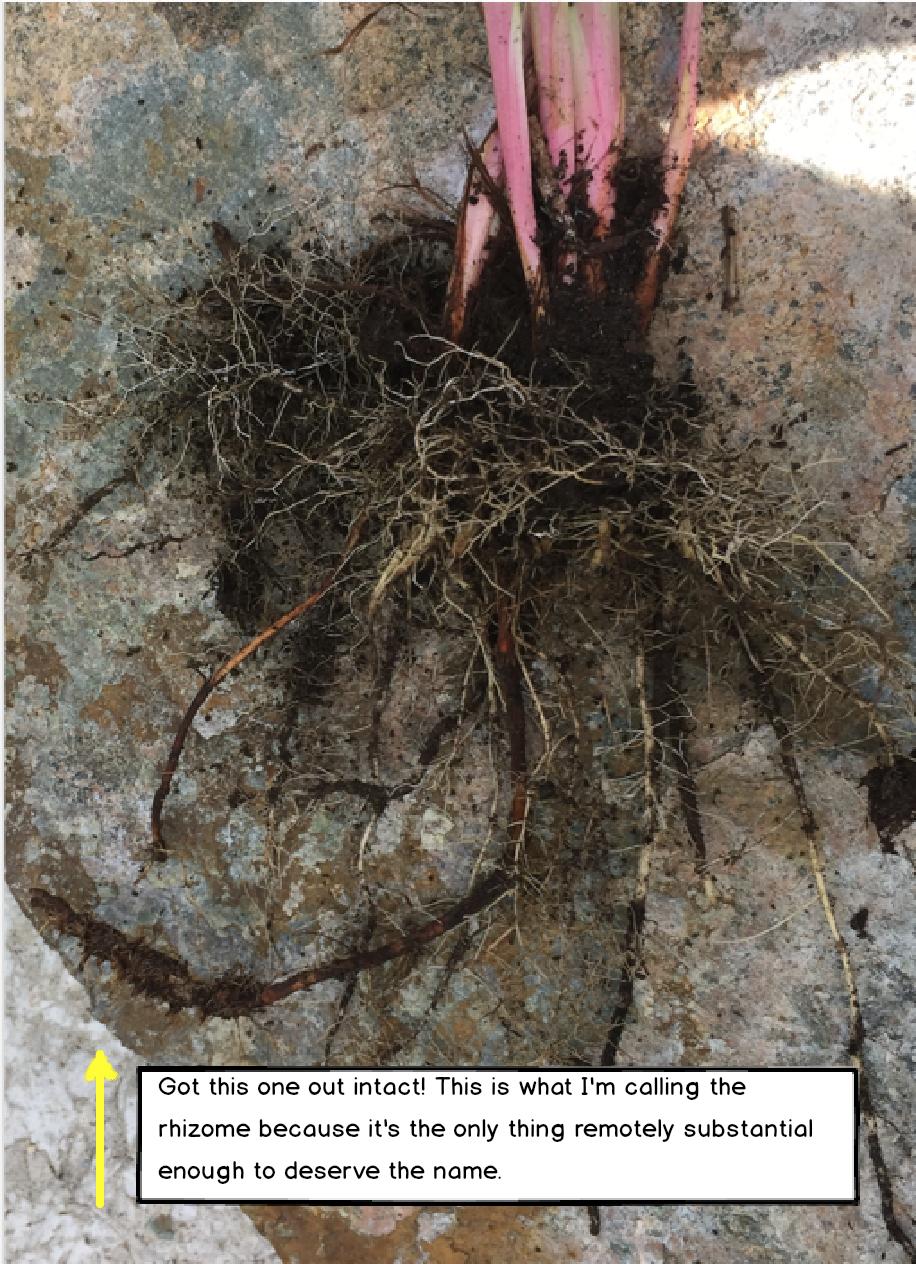I bought a house and put some raised beds in the yard, on top of what we thought (in very early spring) was just lawn. It turns out there were irises (small purple ones, I don't know the variety) there. They now grow up through the raised bed, and are crowding out the plants I put the bed in for. I love irises, and would love to move them someplace else, but the rhizomes are down through 8" of soil in the bed, plus however far below the surface they were to start with. I've tried to dig them up, and get lots and lots of root, but the rhizomes are almost all breaking off and coming up separately in a second dig. Any chance these rooty but rhizome free irises are going to survive? Should I just give up on this project and try to kill them off completely?
-
do you have a photo of the irises when in flower? If not, when do they flower (what time of year) and how tall are they? It would be useful to identify what type of Iris they are, and can you add what part of the world you're in?– BambooCommented May 7, 2017 at 22:58
-
Added a photo of a different patch of the same kind of iris. I'm in the Boston area. This photo was taken on June 1 of last year. It's not the actual patch, but it's clearer than the one of the actual patch. I think they might only flower every other year, cause I've seen no signs of buds at all yet.– CostUnknownCommented May 9, 2017 at 1:12
-
What's curious is , the rhizome, if there is one, is at the top, near the base of the stems, with roots below and around, so I don't understand why you're not getting rhizomes out - usually you get the rhizomes but break the roots. What do these rhizomes that come out with the second dig look like?– BambooCommented May 9, 2017 at 17:01
-
I couldn't figure out how to add photos in the comments, so I've added some more photos to the initial post. The part I'm calling the rhizome looks like what J. Musser is calling a "long stemlike rhizome." In the photo it's barely distinguishable from the roots.– CostUnknownCommented May 19, 2017 at 16:48
-
Yours are Iris sibirica or Iris sanguinea, in other words, they're not bearded irises and don't form the chunky rhizome at the top of the roots, they just have fibrous roots. Just get out as much root as possible - leaving a little behind does not mean they will regrow, but you do need to extract as much as you can.– BambooCommented May 19, 2017 at 19:18
3 Answers
Those look like Japanese iris (Iris sanguinea). They have a smaller, clumping rhizome rather than the large spreading tuberlike rhizomes of the bearded iris (Iris x germanica). They can grow a long, stemlike rhizome when planted too deep, and these stems can grow roots. The plant would then proceed to create a new rhizome crown near the new soil surface. You can remove these extended rhizomes before the become a new crown, as long as they are rooted in. Unrooted rhizomes have a lower success rate. Trim the leaves back by at least half if you transplant them that way.
You might get a stronger transplant if you can dig down and take the original rhizome crown, even without leaves. It would be a stronger foundation to start off of.
Your irises look very happy in this spot.
transplant without the rhizome?
Clearly no.
The rhizome is the most important part of this plant. It will allow it to regrow the next year after a period of "sleep". But it is ok to transplant only a part of it if you can't dig them completely out. Here is how healthy future transplants would look like:
What is important is you wait the end of the vegetative period before you transplant them (usually end autumn). It is not necessary to dig them as deep as you found them.
Now if you see more coming the next years, propose them to neighbors, they will appreciate.
-
Yeah, I had big fat irises at my last house that I successfully split and they looked just like these photos. I'll try to get one of these little ones out of the ground intact and take a picture. They look nothing like this... Commented May 9, 2017 at 17:21
-
Added some photos to show how rooty they are and how little evidence there is of anything that looks like this. Commented May 19, 2017 at 16:49
Update 5 years later: the answer was a resounding yes, these irises transplanted just great! In fact, they are now thriving and spreading in just about every spare corner of the garden and if anyone would like some irises you’re welcome to them 😂





